Kilimanjaro Summit Success Rate
Considering climbing the highest mountain in Africa? You’re probably seeking an awesome adventure trekking Mount Kilimanjaro with epic scenery, incredible photographs, and of course - you want to successfully reach Uhuru Peak, right? Prospective climbers are usually concerned with summit success rates for Kilimanjaro, and for good reason - for many, this is a once-in-a-lifetime adventure that literally climaxes by reaching the summit.
It makes sense to plan your climbing adventure with summit success rates in mind, but it is also important to understand what “success rates” mean in the context of a mountain, especially Kilimanjaro. When we say ‘success rate’ for Kilimanjaro what we mean is the percentage of people who reached Uhuru Peak, from the total number of attempted climbers who officially signed the registry book to climb Mount Kilimanjaro.
Every route on Kilimanjaro has their own summit success rate, so it isn’t accurate to look at summit success as a general number. Each route should be considered, as well as the number of trekking days on a given route (for example a 5-day Machame route has a much different success rate than a 7-day trek on the same Machame route).
If you’re considering which route to trek for your Kilimanjaro climb, keep in mind difficulty level, number of days for an itinerary, if the route is generally crowded, as well as other recommendations from Altezza, such as weather and time of year.
Success rate is not the only factor to consider when choosing a route on Kilimanjaro, but it is a very important one! However, a success rate on a route should be considered alongside climbing experience, previous acclimatization and fitness level of climbers, all of which Altezza Travel discusses in this article.
Read on for our in-depth look at Kilimanjaro Summit Success Rates.
Who calculates Mount Kilimanjaro Summit Success rate?
The official success rate data is outdated. These statistics were kept by the Kilimanjaro National Park Authority (KINAPA), and the data was obtained in the early 2000s - nearly twenty years ago!
Two decades have passed since then, but more current data on summit success rates have yet to be obtained in an official manner from KINAPA.
These official (though outdated) records state the following summit success rate for Kilimanjaro:
- All climbers, all routes 45% success
- All climbers, all 5-day routes 27%
- All climbers, all 6-day routes 44%
- All climbers, all 7-days routes 64%
- All climbers, all 8-day routes 85%
We at Altezza believe that these statistiсs are not accurate for today’s success rates for several reasons. Here are the main two arguments:
Reason 1 - The majority of all Kilimanjaro treks undertaken in the early 2000s were five-day trips. While six, seven and eight-day trips are popular today, at the time most attempted climbs were five-day itineraries. We know that five-day Kilimanjaro treks have the worst acclimatization transition. Many climbers turn back due to altitude sickness.
However, longer treks have increased in popularity and more teams attempt to summit Kilimanjaro through routes that were not popular at the time KINAPA recorded their data, such as the Lemosho Route (which currently has one of the highest success rates, according to our records).
Reason 2 - At the time of KINAPA’s data collection, most tour operators were using the minimum equipment possible. Today, most mountain trek operators use modern mountain safety practices and employ high-quality equipment. Some examples include: energy-rich meals throughout the Kilimanjaro climb, quality tents, enforcing the use of proper gear (including warm clothing for high-altitudes), as well as incorporating technology and gadgets to optimize the climb experience. Overall, the influence of the international mountaineering industry has helped to turn Kilimanjaro climbs into much safer and comfortable adventures than experienced in the era of the early 2000s.
For these reasons, we believe that today’s successful summit statistics are undoubtedly higher.
There is, however, a problem - all today’s statistics have been collected by the mountain operators, not by an unbiased and unprejudiced public authority, such as KINAPA. This allows operators to ‘fudge’ their statistics in order to improve the look of their operation; in other words, it can be used as a marketing tool. Many operators boast the success rate across different routes between 85 and 99%, which, in many cases is true, but beware: such rates may not accurately reflect the success rate of that operator. A safe bet for considering honest summit rates presented by an operator is if their statistics seem too impressive to be probable - then probably are! The more honest an operator, the more realistic their summit statistics. Be encouraged, an responsible operator will not only share true summit success rates, but they will practice accepted mountain safety standards while trekking Africa’s highest peak, and will never expose their customers to unnecessary risks or push them to achieve a successful summit against dangers of altitude sickness.
We believe the increase in success rates is to advancements in mountaineering, including advancements and a better respect for the necessity of acclimatization.
How do we collect our success rate statistics?
Altezza Travel emphasizes honesty and ethics over attractive numbers. While we have no mandate to record data and summit rates, we have been collecting this information from all of our climbing teams since 2015.
Our statistics are obtained independently and provided to our clients and potential trekking teams to help them make solid, informed decisions. This information has helped us to understand which routes have the highest success rates, as well as which routes are better depending on the time of year.
How do we collect this data?
Our mountain guides keep strict records, including health records of each climber and detailed information about every summit. When a team returns to camp after the summit, the lead guide contacts our coordinator of all Kilimanjaro expeditions through a satellite phone and gives a report about the trip. The number of people who reached the summit (both Stella Point and Gillman’s Point), the summit conditions and health status of all climbers is provided during this communication.
Our head of expeditions then enters this date in our custom-built expedition-management system. Among other functionalities, this system keeps the records for all our expeditions since 2015. Whenever new data is put into the system, our summit success rate is automatically updated in a real time mode and, from time to time, we update the information on our website.
As of February 2021, our system contains information about more than 700 expeditions and over 5000 climbers. We continue to update information in our system on a daily basis.
Feel free to contact us if you like to know more about our approach to collecting and processing successful summit and climbing expedition data.
Summit success is not random, but is dependent on several factors, including: physical fitness level, season, climbing route and number of days trekking, guide’s expertise, trip organization and equipment.
Physical training (i.e. fitness) level
Although physical fitness level is certainly important, it is not as decisive and many may think. Anyone in average fitness shape can climb Mount Kilimanjaro! It is the accessibility, or “walkability” of Kilimanjaro that has made it so popular.
Kilimanjaro is considered the most walkable mountain in the world!
Much more important than physical fitness is paying attention to proper acclimatization transition for increased potential for a successful Kilimanjaro climb. Walking slowly, drinking a lot of water, eating well and listening to the guide’s instructions and recommendations are vital to a successful Kilimanjaro summit.
If you have some free time, some Kilimanjaro training will surely add several extra points to your success potential, and probably decrease some discomforts of sore muscles and tired legs, too! The sooner you start training, the higher your chances become.
If your work schedule is very busy, and leaves you with no time for training, then consider taking a longer Kilimanjaro program to allow more time for acclimatization and maximize your summit chances.
Men vs. women
There are no special routes which are more suitable for men or for women - Kilimanjaro is not about strength or any gender-specific traits. We often see slender girls with office jobs performing far better on Kilimanjaro than undisciplined male athletes for acclimatization. A trek should be attempted slowly and steadily, considering hydration and meals just as much as the daily treks, and strong athletes that try to speed up the mountain will find it very difficult, indeed. Basically, everyone without underlying health complications usually does very well when they follow the rules of smooth acclimatization.
Season
The weather influences the seasons, and has a major impact on summit success chances. You will have the highest chances during the dry seasons, and usually a more pleasurable (and drier!) trek throughout.
The dry seasons in Tanzania are:
● From early December to the middle of March. The rainfall is minimal and the weather is fairly hot
● From the middle of June to the beginning of October. The rainfall is also minimal, but it is a bit chilly at times. The rains in Tanzania start in late March through the middle of June and in the middle of October through the middle of December. It has a major impact on climbing - not only much of the trails are washed out, but also it rains almost every day. Additionally, the summit area is full of snow, making it more difficult to walk at the top.
Overall, summit chances during the rain seasons are lower. At the same time, rainy-season climbs has two distinct advantages:
● There are much less climbers on Kilimanjaro. If you want to avoid crowds, then the rainy season is a perfect time!
● Everything around is lush-green. Kilimanjaro is living, breathing and full of energy - you will have a chance to make cool photos.
Route and duration
This is one of the most important things to consider while evaluating your Mount Kilimanjaro summit success chances. Certain route itineraries feature a far better success rate than others. This is the first thing you should consider when planning your Kilimanjaro trip. Route Itineraries are the first thing you should consider when planning your Kilimanjaro Trek.
Lemosho route success rate
Seven- and eight-day variations of the Lemosho route have the highest summit success rates of all on Mount Kilimanjaro. It is suitable and recommended for everyone considering joining one of the Kilimanjaro group tours. The route features a great location of camps, allows the trekkers “to walk high and sleep low” (this is a supreme principle of mountaineering) and it also offers incredible scenery throughout the climb and is less popular than the other routes. It is a good choice for everyone who wants to avoid crowds while hiking the highest mountain in Africa (5,895/19340 f).
Lemosho route is also available in six-day variation, but this option is better for the physically fit trekkers (due to longer daily hikes), ideally with prior acclimatization on other mountains. It is much better than other Kilimanjaro six-day treks, though.
Because of its great acclimatization profile, Lemosho this route is often chosen by novice mountain climbers who are seeking to reach the summit in a soft and relaxed manner, such as Angela Vorobeva, who climbed with Altezza Travel in 2015 to break the world record for oldest woman to successfully summit Kilimanjaro in 2015. Together with other routes, Lemosho is available as a private trip. If you are looking for a group to join, check our open group departures, Lemosho is our favorite pick there! Lemosho has the highest summit success rate of all route!
Machame route success rate
Machame is the second most popular route on Kilimanjaro. But, this route can be somewhat tricky - while the seven-day option is simply great for all groups of hikers, a six-day Machame variation is probably the worst on Kilimanjaro (unless you’re counting the Marangu five-day option, which we do NOT recommend). This is an example of how the number of trekking days makes a significant difference for acclimatization.
Machame is much busier than Lemosho, but offers a fantastic hike through the tropical rainforest on the first day of the trip.
The seven-day Machame trek, according to our independent statistics, has a stunning success rate! However, the six-day option also has a high rate, but please keep in mind, this is usually because we at Altezza Travel recommend this route for experienced hikers with prior acclimatization only. Many of our climbers on the Machame six-day route have climbed Mt Meru or another acclimatization option to prepare for a more rapid ascent of Kilimanjaro.
Marangu route success rate
Traditionally, the Marangu route is Kilimanjaro’s most popular route. It is also the only one with hut accomodations for sleeping, and the only route which uses the same trail for descent and ascent. Because of the hut accommodations throughout, Marangu route requires fewer crew members (no need to carry sleeping tents) and results in a lower price point compared to other treks up Kilimanjaro.
The Marangu route is offered in five or six-day itineraries, with the six-day trek being much more promising for summit success. The additional day for acclimatization at Horombo camp greatly improves one’s acclimatization and prepares the body for the final climb.
The six-day itinerary increases one’s chances to successfully reach the summit of Kilimanjaro. As a rule, everyone who doesn’t have prior acclimatization (which can be gained by doing a Mt Meru hike), should avoid a five-day Marangu option.
Rongai route success rate
The Rongai route is an often underestimated option for summiting Kilimanjaro. However, this is a fascinating way to explore Mt Kilimanjaro from the less-trafficked Northern side. It is seldom chosen by other hikers, because the trailhead is located a bit far, however the experience is very rewarding - this route combines great scenic views and smooth acclimatization transition and offers a better chance for spotting some of Africa’s incredible animals on the slopes of Kilimanjaro- such as elephants! Lack of crowds make this route a good pick for anyone who wants to explore Kilimanjaro in a more reclusive way. The seven-day Rogai option has a fairly good summit success rate, but shorter versions should better be avoided because the slope of Rongai is rather gradual, and offers less “walk high, sleep low” opportunities than Lemosho or Machame, considering the trek from an acclimatization perspective.
For those seeking the company to hike Kilimanjaro through Rongai, visiting our schedule of open group departures is a good thing to do.
Umbwe route success rate The Umbwe route offers a true challenge for experienced hikers. The Umbwe route has the roughest slope, and requires more stamina and strength than any of the other routes.
Unlike other routes, Umwe has portions of the trek where hikers are required to actually scramble up at certain parts of the trail, especially on the first day of hiking. It is a fairly good choice from the acclimatization perspective, but the physical challenge should be taken into consideration for this option.
Our summit success rate on Umbwe is high, but mostly because we recommend it to the well-trained climbers only.
Northern Circuit route success rate
The Northern Circuit route is a true gem of Kilimanjaro; a great trail with a decent success rate that allows climbers to cross the western, northern and southern faces of the highest free-standing mountain in the world. While the Northern Circuit route is the longest route, it offers trekkers the chance to experience more of Kilimanjaro than any other route available. The hikes are longer than other routes, and fatigue may be a reason why the summit success rate on this route is not as impressive as the Lemosho. However, the Northern Circuit is an incredible experience, and shouldn’t be ruled out as a great Kilimanjaro climb option.
Another feature of the Northern Circuit route is the fantastic opportunity to camp overnight in the crater of Kilimanjaro! Imagine, spending a night beneath the stars, which are incredibly vibrant and feel close enough to reach out and touch at the high-altitude camp of Kilimanjaro’s crater. This is an experience unlike any other on the highest mountain in Africa, right along the equator.
If you want to know more about the Northern circuit and other routes, visit this page on our website.
Trip Organization - the Importance of Expertise
An appropriately planned and organized mountain expedition has a very serious impact on the success rate for Kilimanjaro climbs. In fact, many Kilimanjaro failures could be prevented by a good guide and responsible tour operator. Some of the factors that determine summit success rate, which are based on a tour operator include:
Professional Guides - A qualified and properly trained guide should be considering acclimatization transition for every climber on a trek. This includes regular health checks with each and every climber, and not only identifying proper acclimatization transition, but also spotting signs of acute mountain sickness and taking quick action for the safety of climbers. Sometimes, emergencies can be prevented by professional guides, or, the guide can make an important decision regarding questions of safety and health. For this reason alone, it is vital to choose a responsible operator for your Kilimanjaro trek.
Meal Plan - the human body needs even more energy than usual for a Kilimanjaro trek. Not only are you hiking long stretches each day, but the increased altitude requires more from your body, as well. A menu rich in quality calories, which also considers dietary restrictions or allergies is essential and definitely contributes to summit success rate. Operators hoping to save on costs will offer a poor menu with repetitive meals that do not provide increased calories during a mountain climb. A good tour operator has a special mountain menu which is rich in calories, tasty and easily digestible. They should also offer snacks to help fuel you to the very top of Kilimanjaro.
High-quality Equipment - well-insulated tents, proper sleeping bags and other items are what make it possible to rest, reenergize and acclimatize well. If you don’t give much thought to quality tents and sleeping gear when planning your Kilimanjaro trek, you may be in for a shock from a cold and wet bed from a leaking tent while you’re on the mountain - and that surely will impact your chances for a successful summit. Remember, many Kilimanjaro treks are six or seven days in length, therefore, getting a consistent good night’s rest is essential for your body. It is also a main factory for good acclimatization and has a direct impact on summit success rates. For a better experience overall, and increased chance for summit success, ensure your tour operator only uses quality equipment that is well-maintained and suitable for the inclement weather of Kilimanjaro.
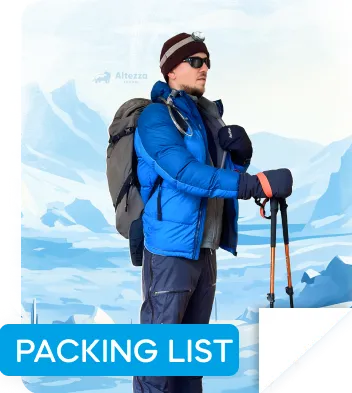
Qualified travel consultants - When looking to book a Kilimanjaro trek, don’t just choose the fastest route over the fewest amount of days in order to save some money. Any operator that suggests you do so isn’t putting your safety or even your climbing experience as a priority, they just want you to book with them at any cost.
Knowledgeable travel consultants and managers help those interested in climbing Kilimanjaro book a trek that fits with their interests, abilities, and experience level. Altezza Travel suggests climbing routes that match trekker’s fitness levels (such as for Rongai and Umbwe), or personal preferences: popular or less busy routes, depending on what type of experience you are seeking.
Further, we always recommend treks based on the number of days with the highest success rates, and would never suggest something like a five-day Marangu trek for a novice climber.
Our team are experts in understanding acclimatization transition and the importance of preparing for a mountain trek, and we always provide honest advice to clients and prospective climbers. If you feel that you don’t understand how to prepare for a high altitude climb, or what acclimatization transition means, trust us to provide good suggestions for your best interest and highest chances of success.
Conclusions
Overall, Kilimanjaro success rates are a good place to start when choosing your once-in-a-lifetime climbing adventure. Considering which routes and itineraries have a high success rate is an excellent way to choose your Kilimanjaro climb. If you haven’t taken part in a mountain expedition before, deciding on a route with the highest summit success rate will certainly be a wise decision. However, success rates of routes should not be the only factor in your decision-making. Remember to ask how summit success rates are measured and how such data was collected. Don’t blindly accept impressive statistics, but consider if the information is very dated (such as in the case with KINAPA records), and be suspicious of overly impressive summit success rates. Keep in mind that a qualified guide, good equipment and nutrition play an important part on any Kilimanjaro climb, as well.
FAQ
Which Kilimanjaro route has the highest success rate? Based on Altezza Travel’s independently accrued statistics, we can confidently say that of all most popular routes on Kilimanjaro the Lemosho 7-day and 8-day variations have the highest success rate. Other options worth thinking about are 7-day Rongai and Machame routes.
If you want something special, then a fairly good acclimatization is offered by the 9-day Northern Circuit route with the option of Crater Camping for a truly unforgettable experience. How hard is climbing Kilimanjaro? We have an entire article that answers your questions about climbing Kilimanjaro difficulty, in detail.
For a quick answer: climbing Kilimanjaro is moderately hard. It is certainly less challenging than most of the other high mountains and considered one of the easiest of the Seven Summits (highest peaks on the seven continents) but without question is more demanding than a regular hike. It is a multi-day trek up the highest free-standing mountain in the world.
Climbing Kilimanjaro doesn’t require any special mountaineering skills or equipment, and a person of average fitness level, without any underlying health complication can certainly successfully reach the top. Determination, proper planning and adhering to acclimatization are essential for reaching Kilimanjaro’s Uhuru Peak.
Has anyone died climbing Kilimanjaro? Lack of proper acclimatization, unprofessional guides and the desire to reach the top at any cost are the reasons for the preventable 10-15 deaths on Mount Kilimanjaro which occur every year. High-altitude sickness in the forms of pulmonary and cerebral edema are the root causes of these deaths. The symptoms for these serious health issues are identifiable by professional guides, and preventable with proper health considerations and efficient rescue operations.
Take into account that an estimated 40,000 climbers attempt Kililmanjaro each year. With this in mind, the number of deaths is not a frightening statistic, especially when compared to other popular mountain climbing destinations around the world, which usually have much higher rates.
As long as the rules of proper acclimatization are followed and professional, well-trained guides lead your Kilimanjaro trek, then climbing Mount Kilimanjaro is not a dangerous adventure for your African holiday.
Is it worth climbing Kilimanjaro?
Climbing the highest free-standing mountain in the world is certainly worth a week of your time! Many feel this is a memorable, once-in-a-life time achievement that they cherish forever. Additionally, a Mount Kilimanjaro climb is a bucket-list experience for many.
Can beginners climb Kilimanjaro? Mount Kilimanjaro is often considered the best option for first-time climbers! Called the ‘Most Walkable Mountain in the World’, summiting Kilimanjaro doesn’t require specialized equipment or advanced mountaineering skills. At 19,340 ft (5,895 meters) it is the highest mountain in Africa, but not technically difficult, which means that novice climbers can get a grasp of altitude, while avoiding in-depth training, such as is required for some of the other top peaks around the world. It is a kind of a litmus test, to help determine if you enjoy high-altitude hiking and want to make a deep investment in equipment for trekking other world-renowned peaks.
Due to its rising popularity, the standard of comfort on Mt Kilimanjaro is much higher than on other popular mountains. If Kilimanjaro is your first big climb, you may find yourself slightly disappointed on other iconic travel destinations, because of the incredible experience on Kilimanjaro.
Do you need oxygen to climb Mount Kilimanjaro? As long as acclimatization transition is going as planned, bottled oxygen is not necessary for a successful climb to the peak of Africa. At the same time, however, our climbing crews take bottled oxygen for all our trips to ensure safety of our customers. We use it in case a hiker shows mild symptoms of altitude sickness and to make sure that a sick person can be evacuated safely.
Can smokers climb Kilimanjaro? Of course they can! While there is a popular myth that smokers (whose lungs are accustomed to oxygen deprivation due to smoking) suffer less from high-altitude sickness than the people without this harmful habit, this has not been proven at all.
All content on Altezza Travel is created with expert insights and thorough research, in line with our Editorial Policy.
Want to know more about Tanzania adventures?
Get in touch with our team! We've explored all the top destinations across Tanzania. Our Kilimanjaro-based adventure consultants are ready to share tips and help you plan your unforgettable journey.


















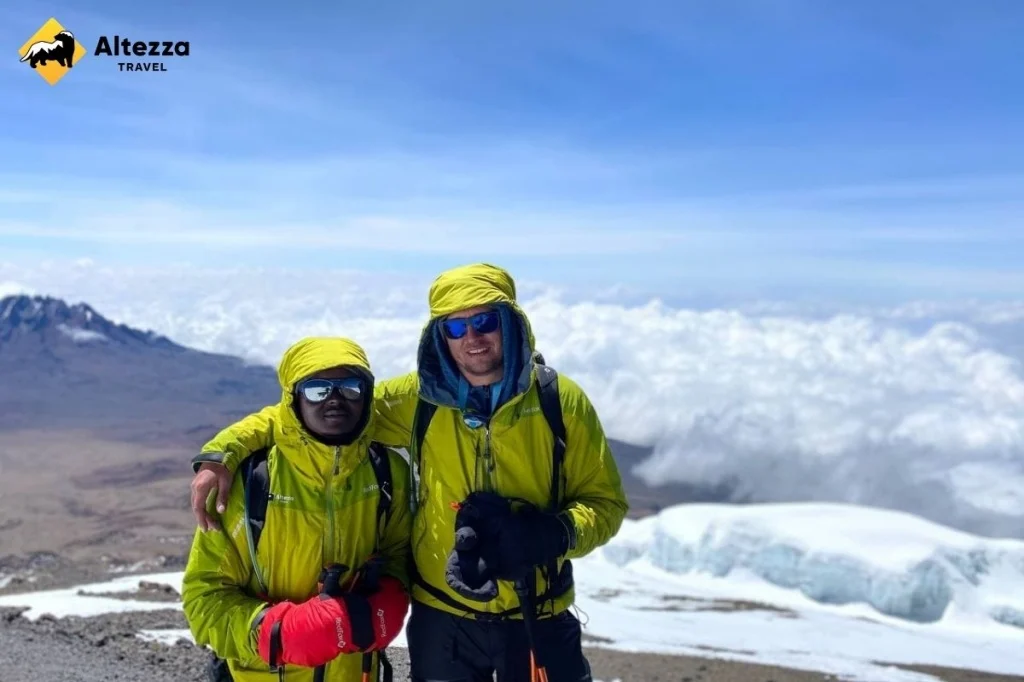
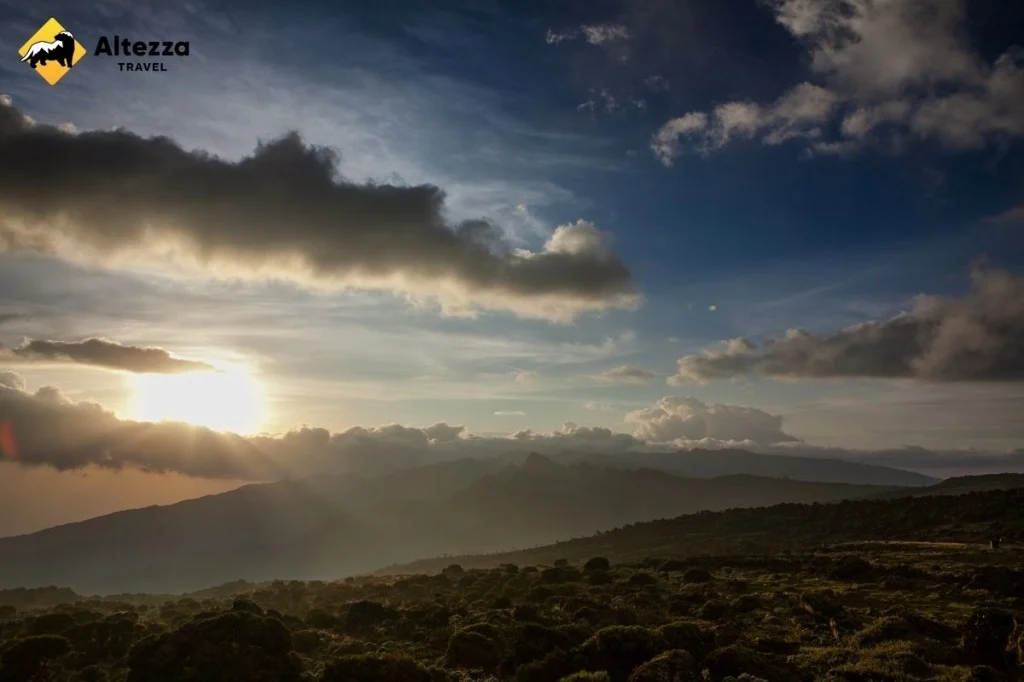
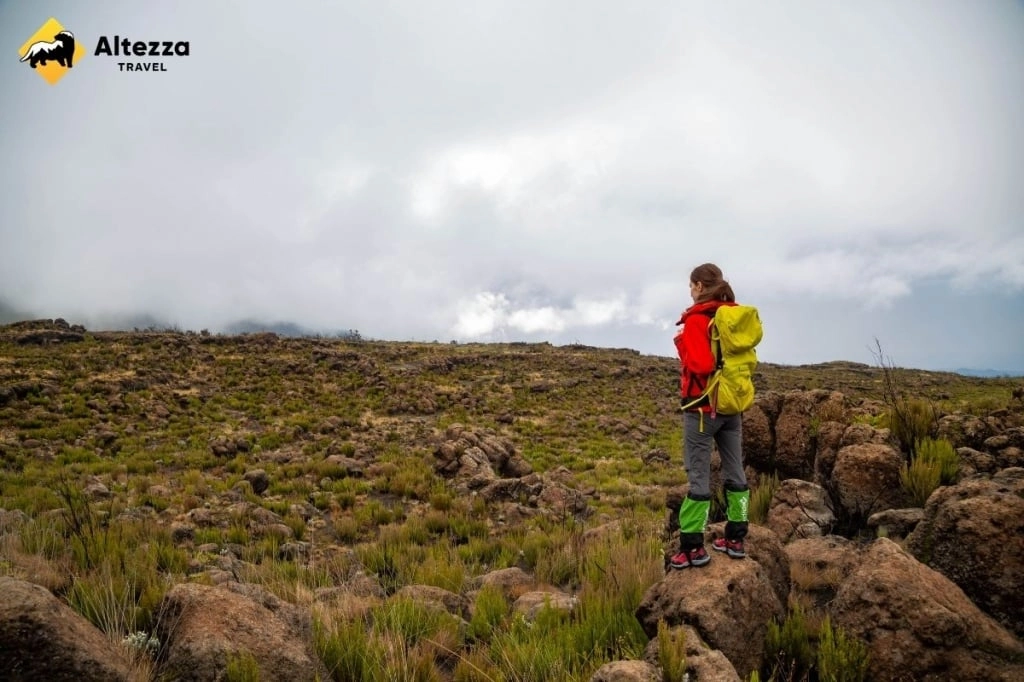
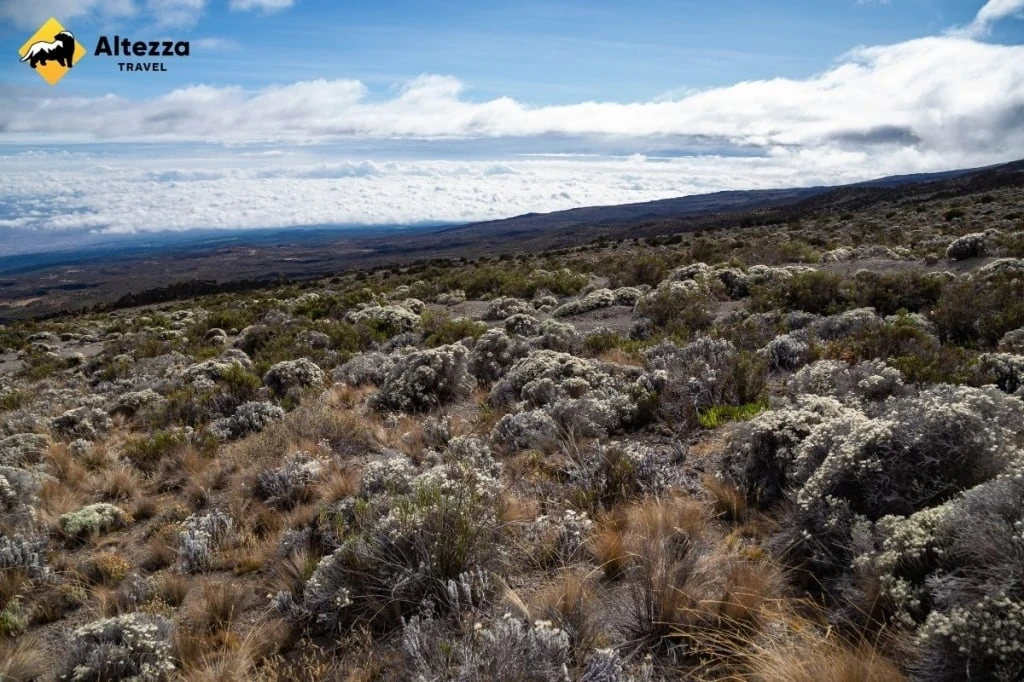
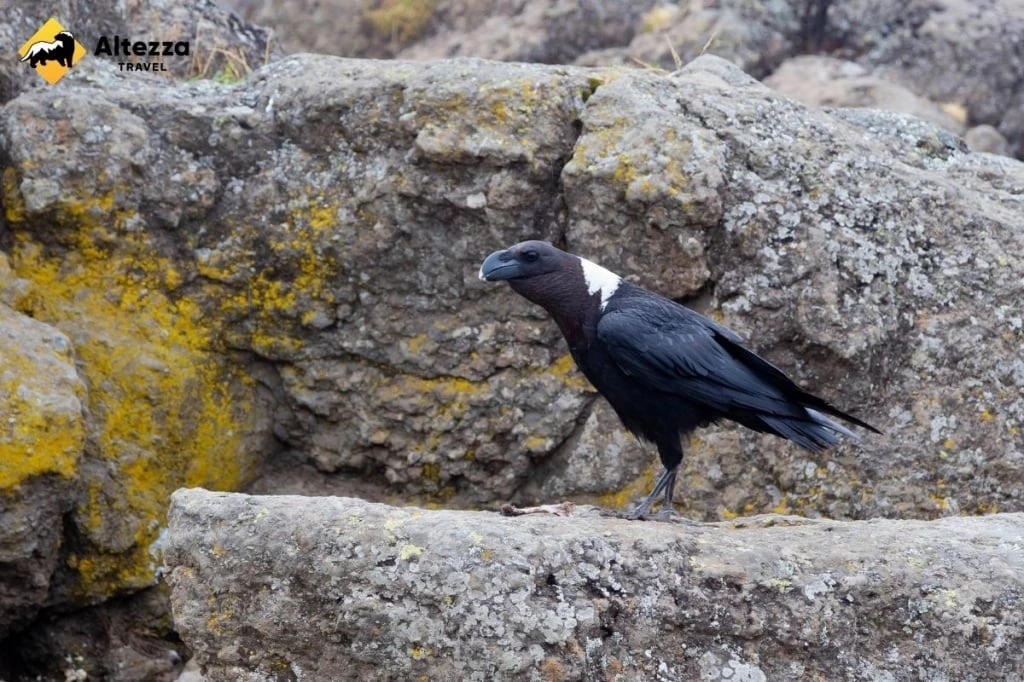
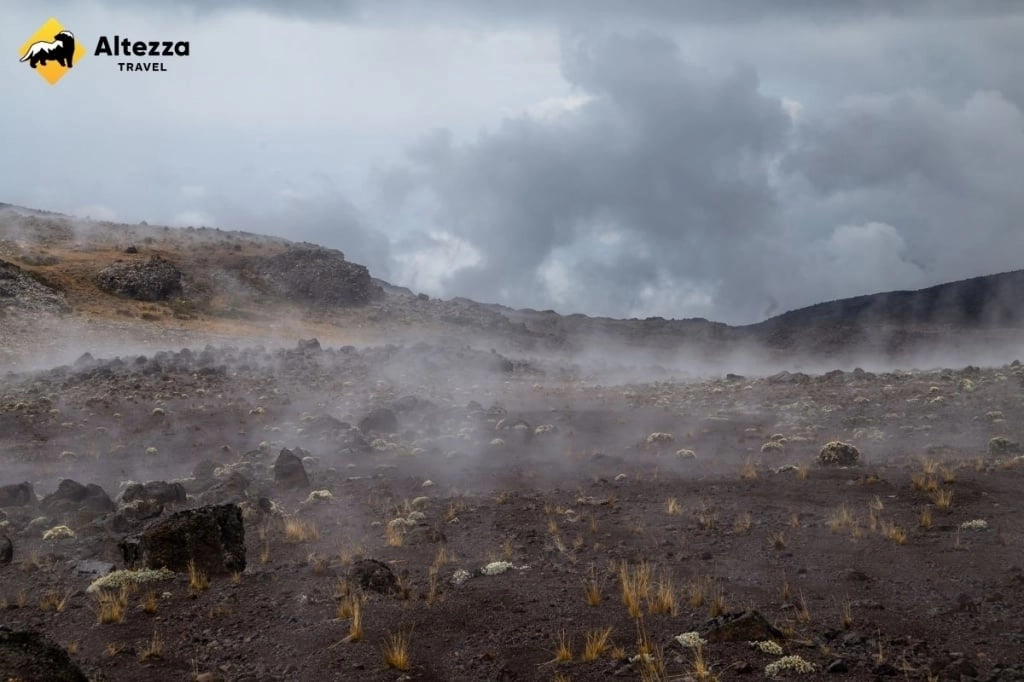
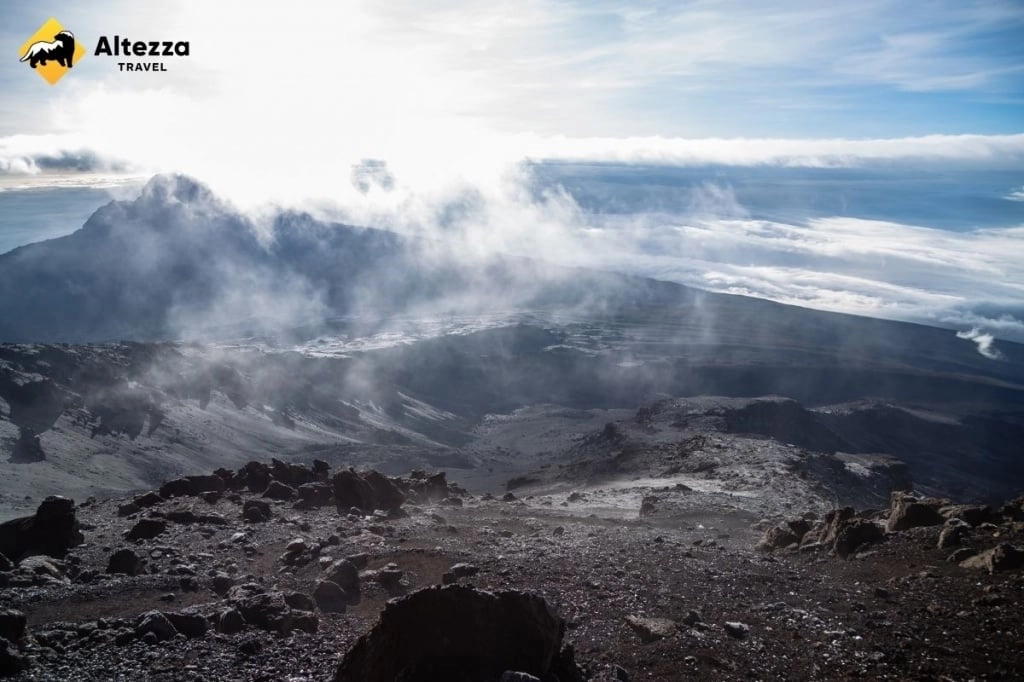

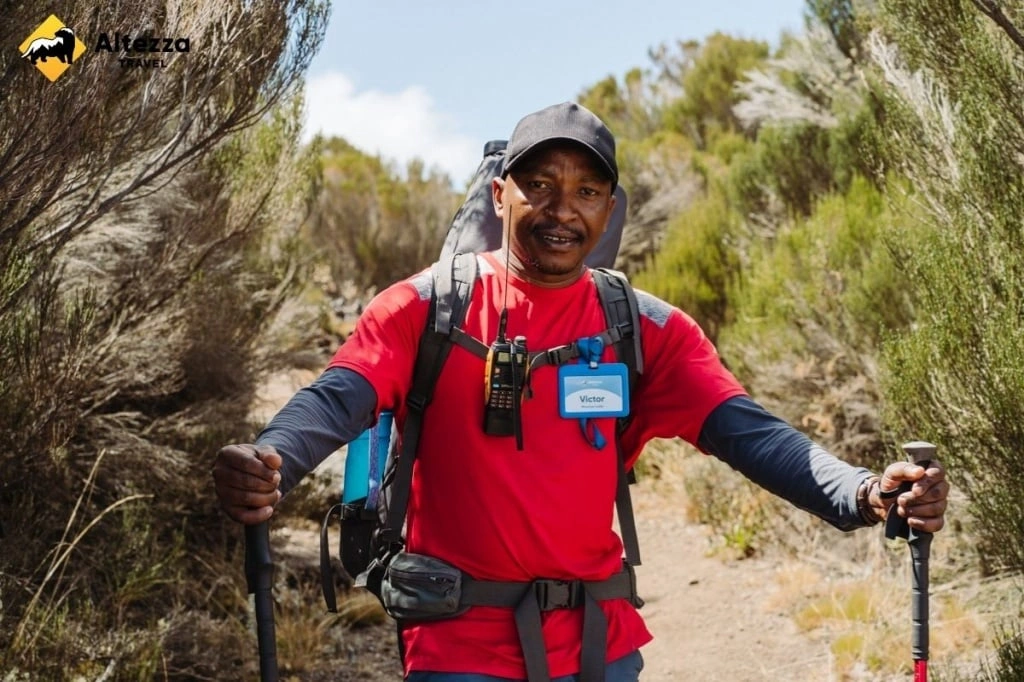

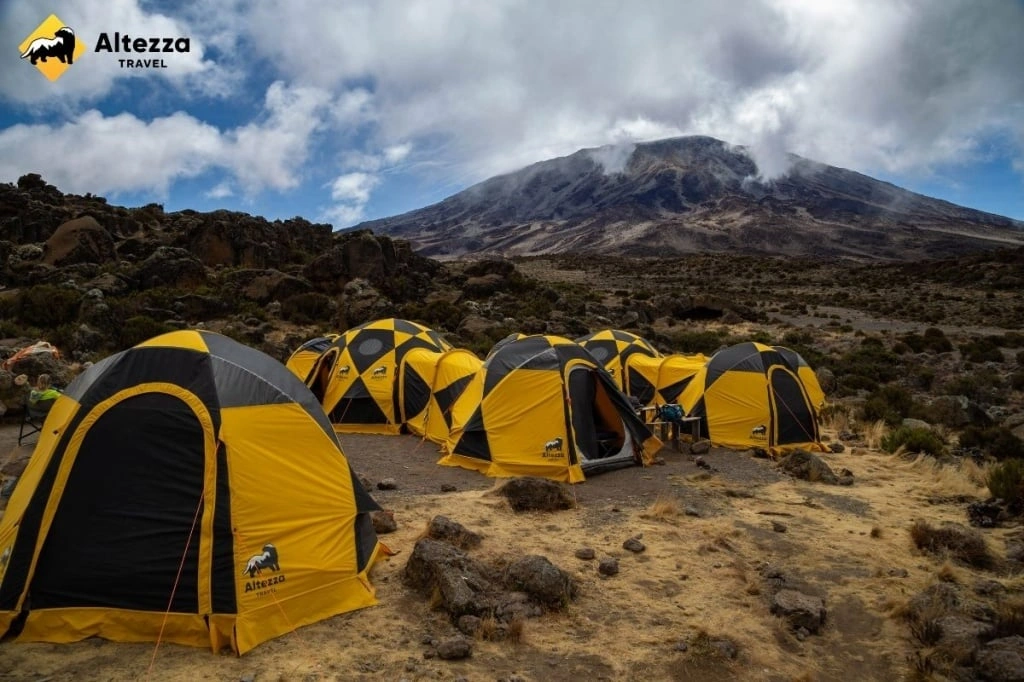


There are two main options - first, the Rongai route. It's not steep, there's no Barranco Wall on the way, and it experiences less rainfall. Yet it's a bit less scenic. Alternatively, you could consider the 8-day Lemosho route. We guided Angela Vorobyova, an 85-year-old, who successfully reached the summit without any supplemental oxygen visa that route. It's a great route with fantastic views. Regarding the success rate for people above 65+, it really depends on many factors including from genetics, fitness level, previous mountain experience, smoking, etc. So, it's hard to guarantee, but for an averagely fit person, the success rate would be above 85%.